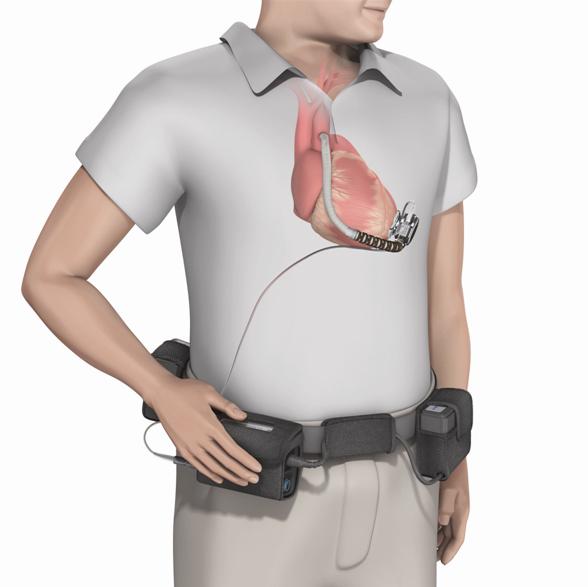Wound care
Cardiac surgery patients will have one or more wounds to manage. Clinicians can positively influence the wound healing process and help prevent abnormal wound healing outcomes by fostering and delivery comprehensive wound management.
The post-operative management of the surgical wound can be straight forward.
The general principles of care are:
- Keep the wound clean and dry
- Assess for any complications
- Remove sutures or staples when the wound is healed
- Notify the clinical team immediately when signs of complications present
The specifics of wound care such as the selection of dressings and the time a dressing remains in place will be dependent on the local hospital protocol and clinicians should familiarize themselves with these and manage wound healing in accordance with local guidelines.
Note that patients are often more comfortable if the wound is covered for the first couple of weeks.
If wound complications arise, clinicians should be able to assess and identify the causal factors so that they can be managed effectively and complete wound healing can be achieved. [#oldfield-a-burton-f.-2009]
Educating the patient and their families about the importance of immediate and proper wound care should highlight the need for meticulous cleaning habits, particularly in the first 3 weeks following surgery, and risk factor modification like poor nutrition status and smoking.
Scar assessment
Regular, routine scar assessment will facilitate early identification of a problematic scar. This assessment should include both a subjective and objective assessment. The patient’s own subjective views about the scar, including pain experienced, appearance and sensitivity is important and may influence the patient’s quality of life.
The objective aspects of the scar assessment include its size, shape, colour, texture and pliability.
There are many useful objective scar assessment tools available which offer a means of obtaining quantitative measurements which are important in evaluating treatment efficacy.
Scarring represents the final stage in the normal wound healing process. Clinicians should reassure patients that it is usual to have all or some swelling, slight redness, numbness, itching and sensitivity to touch in the early post-operative months. Clinicians and their patients can help minimise these problems after cardiac surgery by following the patient tip sheet for Managing Scars after Heart Surgery.
The earlier a clinician or patient recognises the signs of abnormal scarring, the better is the likely outcome.
Patients should be advised to seek advice if the scar:
- Is thick and raised
- Is very sensitive and not improving
- Changes in redness, swelling, tenderness or a discharge develops
- Has not settled by 6 months post operatively
Factors that need to be considered prior to electing to treat a scar include:
- Whether the scar is worsening or improving
- The anatomical location of the scar
- Patient’s presenting symptoms
- Presence and/or severity of functional impairment (i.e, does the scar affect mobility)
- Stigma associated with the scar and its impact on the patient’s quality of life
- Likelihood of improvement with treatment
Scar management
Scars usually begin to develop 6-8 weeks post-surgery after complete re-epithelisation, and continue a process of maturation for up to 2 years. [#teot-l-roques-c-otman-s-brancati-a-et-al.-2012] While the effect of the scarring on many individuals remains non-problematic some scars may be aesthetically unappealing and restrict range of motion.
Abnormal scars are described as being:
- Keloid
- Hypertrophic
- Atrophic
- Contracted
The most common problems from scarring include: [#chen-ma-davidson-tm.-2005]
- Pain
- Disfigurement
- Psychological stress
- Loss of motion from contracture
- Pruritus
Treatment of abnormal scarring
If a scar causes aesthetic or functional problems then treatment may be considered.
The scar treatment can be either non invasive (e.g., silicone gel sheeting, Vitamin E cream and pressure and tissue compression) or evasive (e.g., corticosteroid injection or surgical excision). [#mustoe-ta-cooter-rd-gold-mh-et-al.-2002]
Scar massage
Scar massage is used to:
- Soften and flatten scars
- Keep the scar tissue flexible
- Decrease sensitivity
- Prevent adhesions forming under the skin which can limit mobility of the chest
Massage guidance:
- Check that the wound has healed and do not massage if any weeping or bleeding is evident
- Use moisturisers such as vitamin E cream, sorbolene, or bio oil
- Use the ball of the thumb in circular motions applying sufficient pressure to blanch the finger nail
- Mobilise the tissue around the scar to break up any adhesions and avoid rubbing the surface of the scar
- The patient should massage the area at least 3 times a day for 5-10 minutes at a time
Scar desensitisation
Often the chest area and the scar can become very sensitive. Patients can attempt to desensitise their scar by following a graded de-sensitisation program as outlined in Managing Scars after Heart Surgery. Silicone gel may also be used to help soften and sooth the scar. If symptoms persist the patient should be medically reviewed as they may require treatment with antibiotics or a topical steroid.
 Pathophysiology
Pathophysiology
 Treatment & Management
Treatment & Management
 Exercise
Exercise
 Medications
Medications
 Psychosocial Issues
Psychosocial Issues
 Patient Education
Patient Education
 Behaviour Change
Behaviour Change
 Clinical Indicators
Clinical Indicators
 Pathophysiology
Pathophysiology
 Treatment & Management
Treatment & Management
 Exercise
Exercise
 Medications
Medications
 Psychosocial Issues
Psychosocial Issues
 Patient Education
Patient Education
 Behaviour Change
Behaviour Change
 Clinical Indicators
Clinical Indicators
 Pathophysiology
Pathophysiology
 Treatment & Management
Treatment & Management
 Exercise
Exercise
 Medications
Medications
 Psychosocial Issues
Psychosocial Issues
 Patient Education
Patient Education
 Behaviour Change
Behaviour Change
 Clinical Indicators
Clinical Indicators


